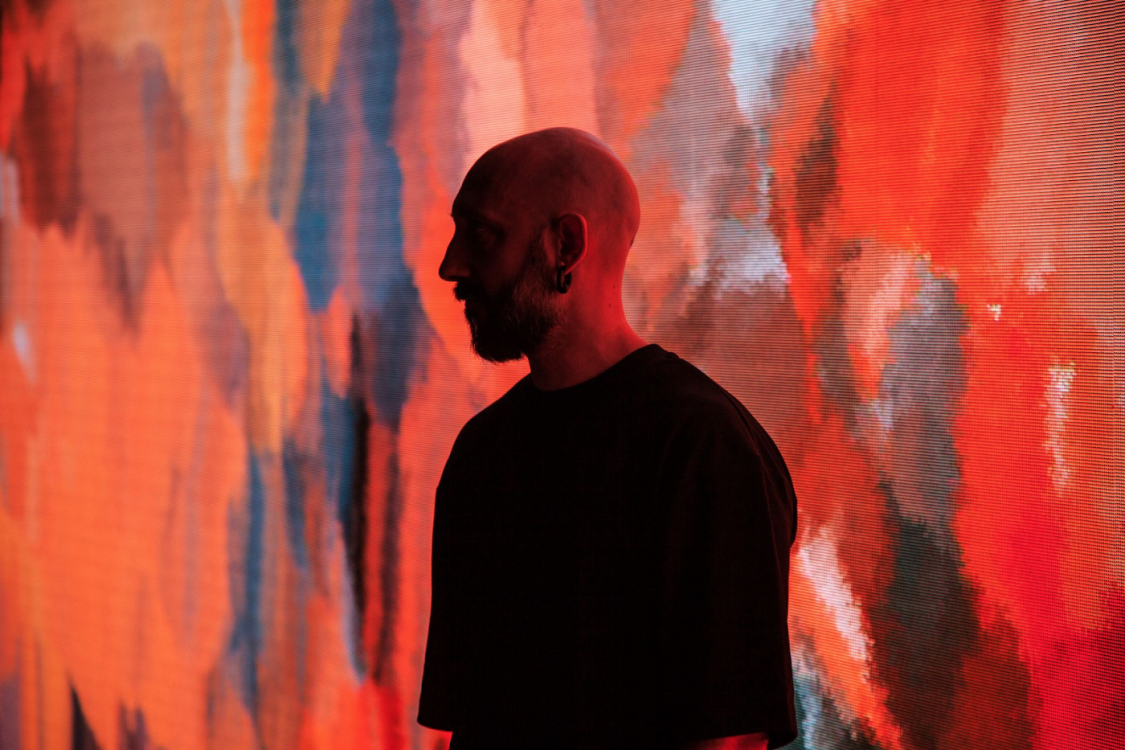Quayola, PP_F_018_1, NFT, 2021, courtesy of the artist and bitforms gallery.
Quayola: Gazing Machines
Multimedia artist Quayola’s first NFT reflects on the heritage of landscape painting and man’s tradition of representing nature.
Bidding for Quayola’s inaugural NFT, PP_F_018_1, closes at 12pm EDT on May 13.
Quayola’s artistic practice revolves around technology and presents itself, on a general level, as a study on its role in the relational dynamics of man with his surroundings. His art stems from the equation man-machine, wherein the anthropic agency is no longer the only protagonist in the exploration of reality. Belonging to a generation that forged artistic production in the digital world, his works merge classical iconographic legacy and contemporary digital language. An increasing number of artists are using new technologies as mediums, however, for Quayola technology manifests as an intelligent colleague to collaborate with, rather than simply a tool to use and control. This is the starting point of his investigation, in which the machine’s logic is no longer subjected to the human one. In this sense, Quayola’s process could be referred to as reverse machine learning.
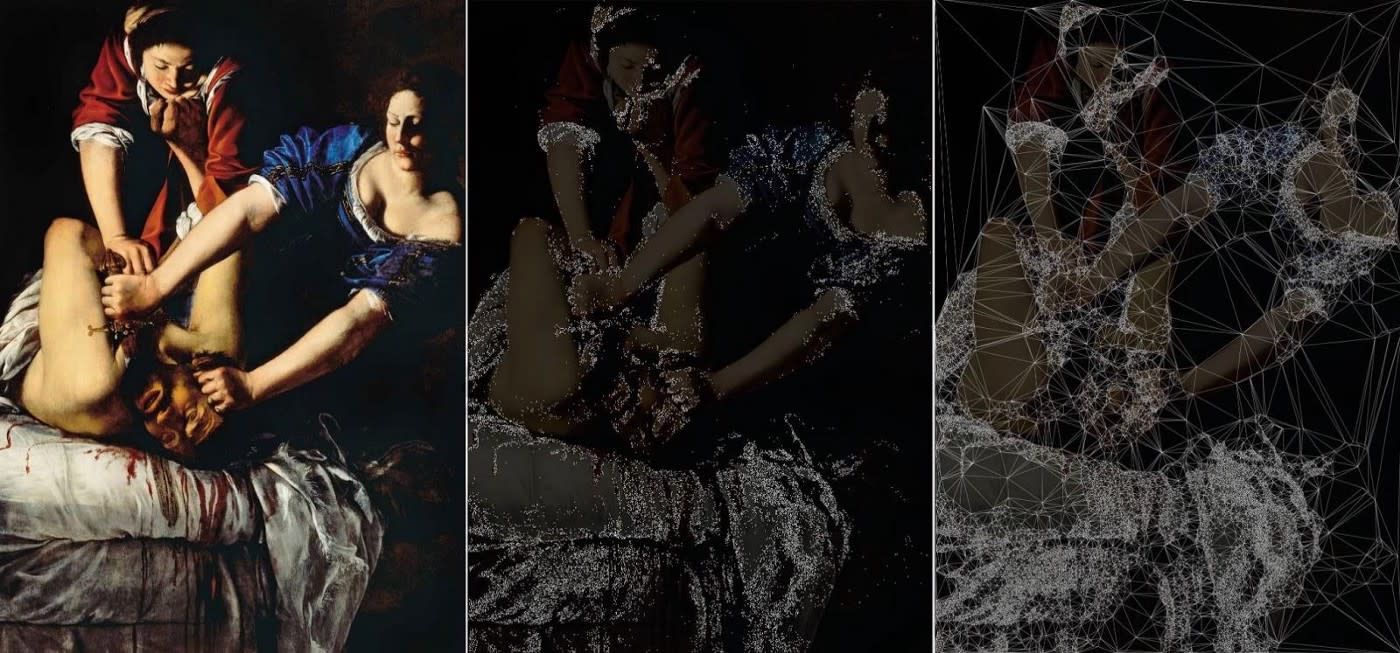
His point of departure is the symbiotic relationship of man with technology: on the one hand, the machine has capabilities that are beyond our abilities and understanding; on the other hand, the machine does not have the aesthetic sensibility of a human being. Men operate machines, but in turn machines force men to adapt to its logic. Quayola’s work delves into these two opposite, but complementary, ways of deciphering the world and the new visual codes and hybrid aesthetics arising from the encounter between these two perspectives.
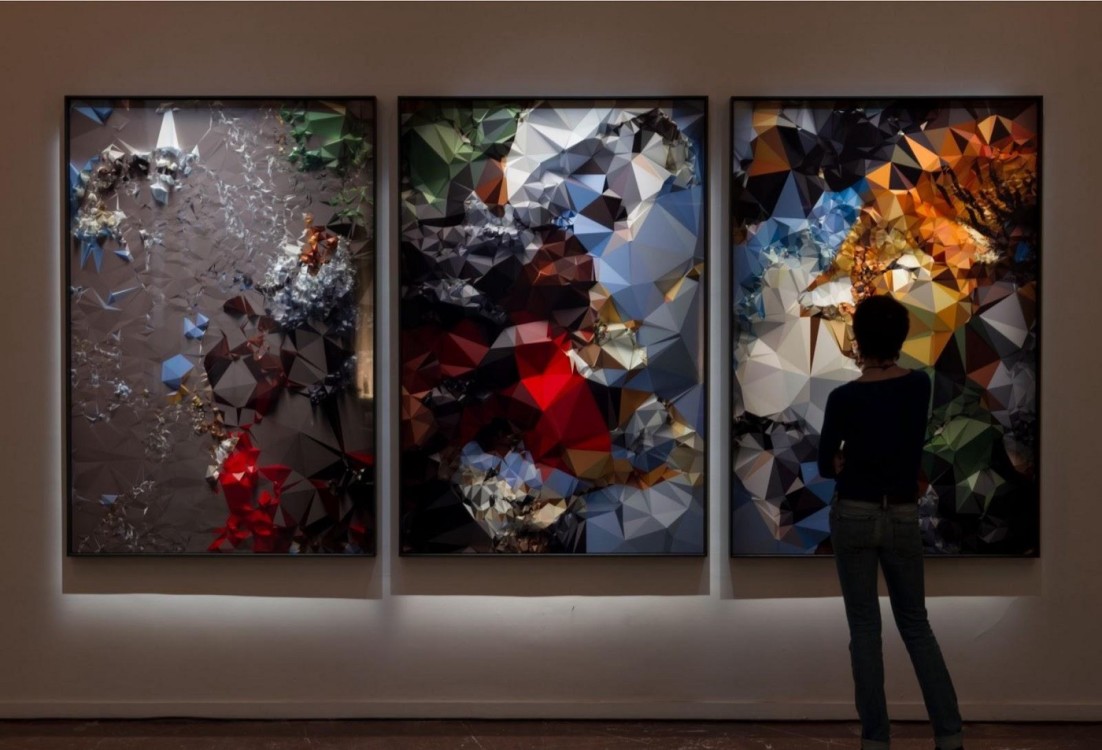
Quayola’s inaugural NFT: PP_F_018_1
Quayola’s inaugural NFT, PP_F_018_1, was minted on May 10 in exclusive partnership with Verisart and SuperRare as part of 8x8: 8 genesis NFTs by 8 major artists working with AI, code and digital technologies. Bidding closes around 12pm EDT May 13. This work is presented in collaboration with bitforms gallery.
PP_F_018_1 is part of an ongoing series started in 2015 focusing on the heritage of landscape painting, and more broadly a reflection on man’s tradition of representing nature. Drawing from Impressionism, Quayola pursues a methodic observation of natural patterns using advanced technological apparatuses.
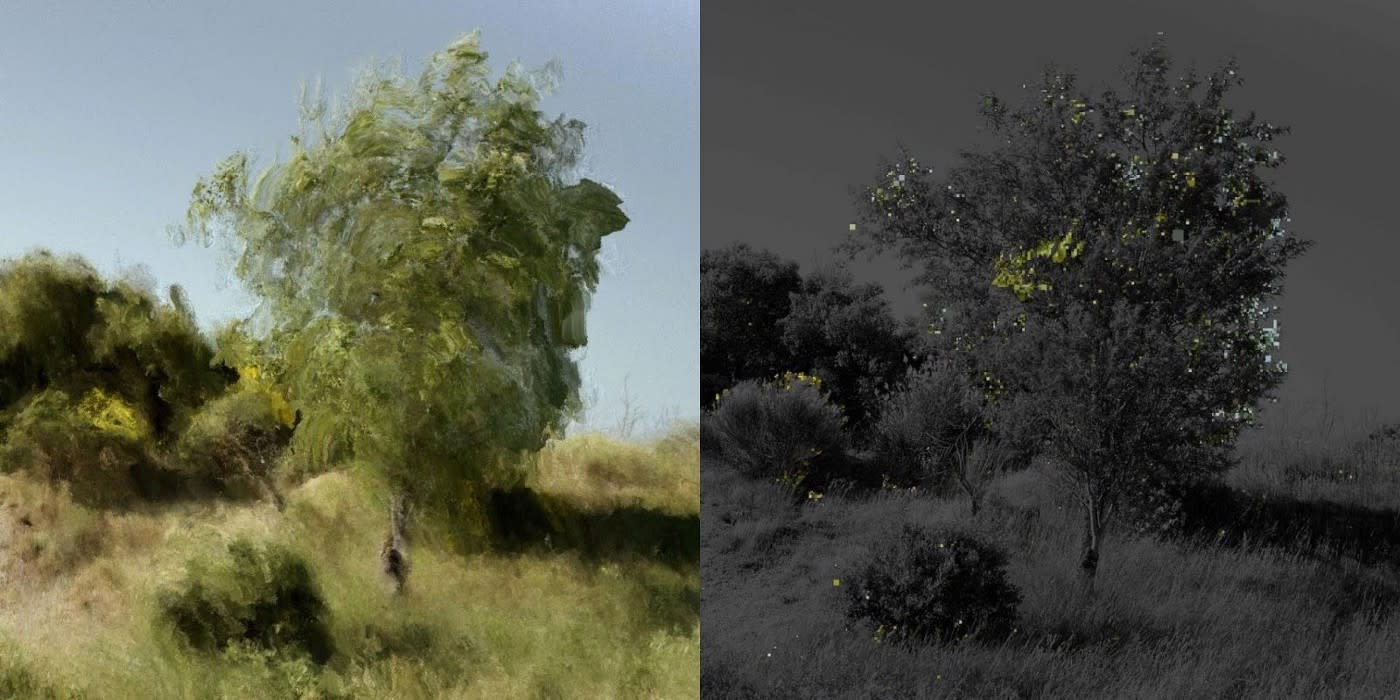
The results of his research are ephemeral algorithmic compositions blending opposite realms: nature and technology, representation and abstraction, and ultimately human and machine. Quayola suggests a new understanding of the natural world, achieved through the collaboration with technology.
For PP_F_018_1, inspired by the work of Vincent Van Gogh, Quayola has returned to the same countryside of Provence some 130 years later to capture some of the same iconic natural compositions.
The resulting computational paintings are generated by the analysis of ultra-high-definition videos. Employing custom software, the source videos are transformed into algorithmic animations resembling real paint, while simultaneously exploring new digital aesthetics.
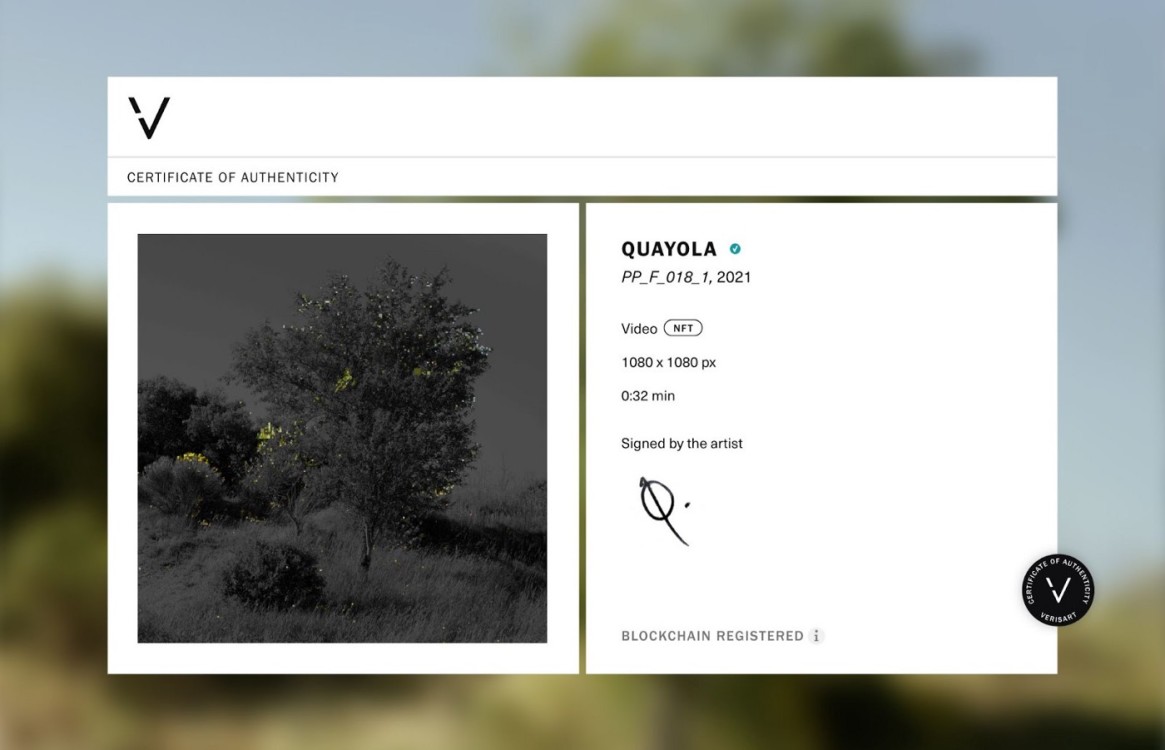
Quayola’s inaugural NFT is certified by Verisart, an award-winning blockchain certification platform. Designed to empower artists to tell the story of their work, the digital certificates include additional images, videos and documents. For collectors, Verisart’s patent-pending Certificates of Authenticity (COA) form an integral part of collecting NFTs. They provide confidence in the identity of the artist and the verified history of the artwork.
The algorithmic palette: landscape painting through computer vision
Over the years, Quayola has been exploring natural elements and landscapes by means of advanced technological apparatuses, this research resulting in a series of works in which digital simulations recall modern paintings. This part of his research could be considered as an attempt to see nature through the eyes of the machine and, at the same time, through the eyes and with the methodology of a traditional painter. For this reason, his work bridges the gap between past and future, tradition and innovation. The real-time observation of changing landscapes and natural elements places Quayola’s work within the classical painting legacy, more precisely modern landscape tradition. In fact, just like for the painters of the past, nature is not treated as a subject, but rather a space to explore new methods of observing the world: process is the real subject. By simulating brushstrokes, the digital paintings clearly recalls traditional techniques, however, what Quayola ultimately addresses is the array of different representations emerging from the observation made in collaboration with technology.
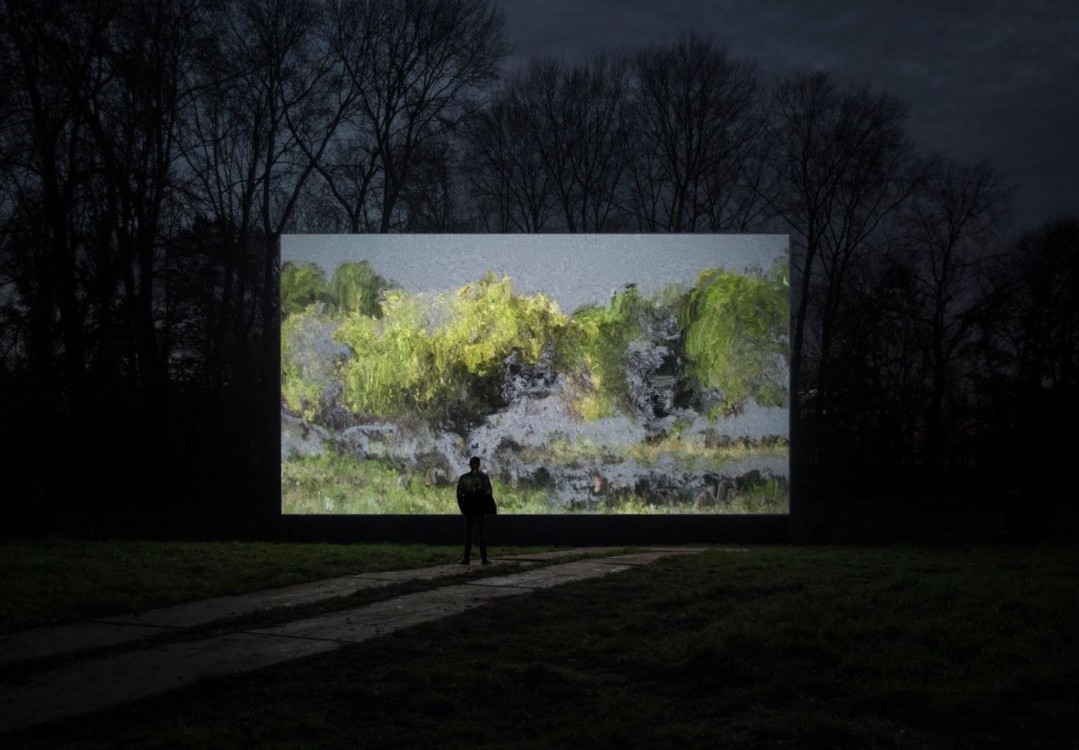
The digital brushstrokes are created by algorithms processed by a custom software. The referent is ultra-high-definition video footage serving not as a subject, but as a data-set for the extraction of information, such as colors and movements. For instance, the fluctuations in the final simulation in Jardin d’été or in PP_F_018_1 are extracted from the original movements of the trees. The digital simulations are not a means, but rather the very subject of the investigation: the algorithm is handled as pictorial matter, rather than a tool, thus revealing its aesthetic value. These video works alternate phases of brushstroke simulations and traces of the digital process: it is precisely by highlighting the stages of the work that Quayola manages to unveil how he is operating with the computer. This technique combines traditional aesthetics with languages belonging to the digital world: both resonate with our sensibility while also igniting a renegotiation of our role with respect to technology in the observation of reality.
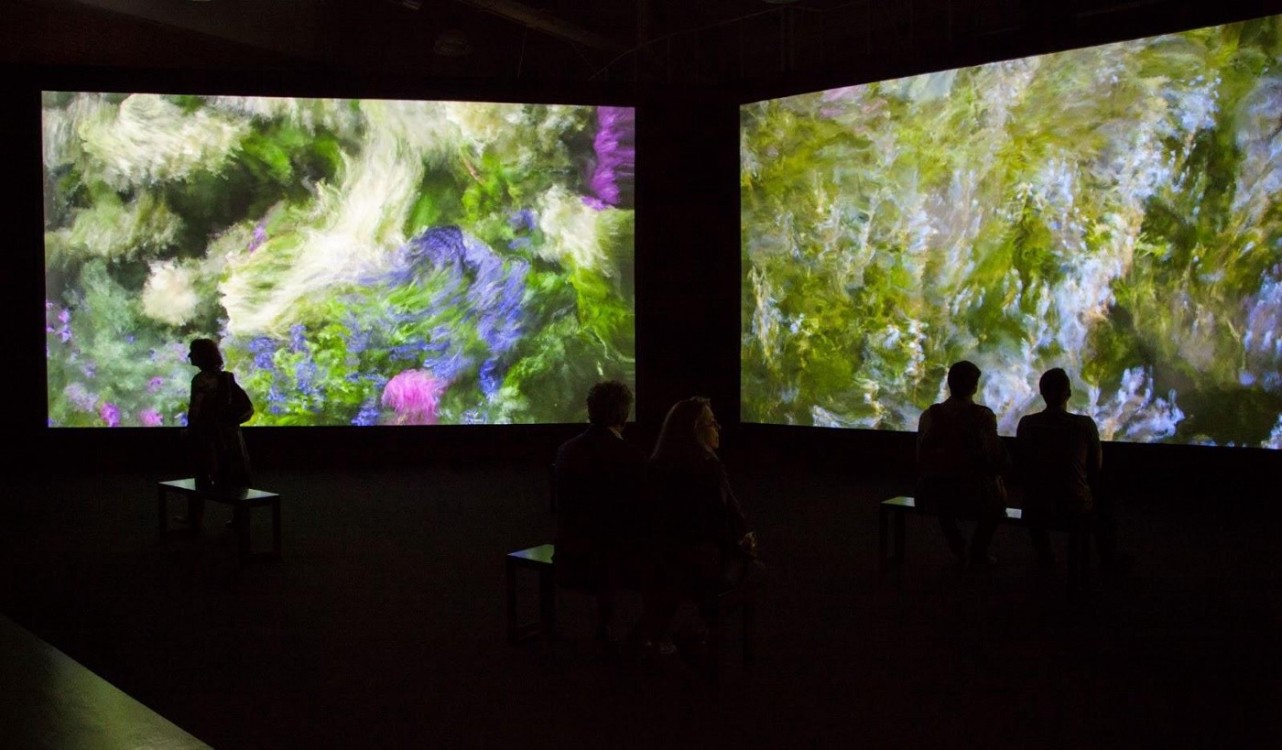
Towards hybrid perfection: 3D-scanning and autonomous vehicles
The nature represented by Quayola appears slightly different from the one we are familiar with: it combines familiar forms with codes belonging to the digital world. The most advanced tools in 3D-scanning present a potential not only for technical purposes but also for the disclosure of new cognitive logics and visual languages.
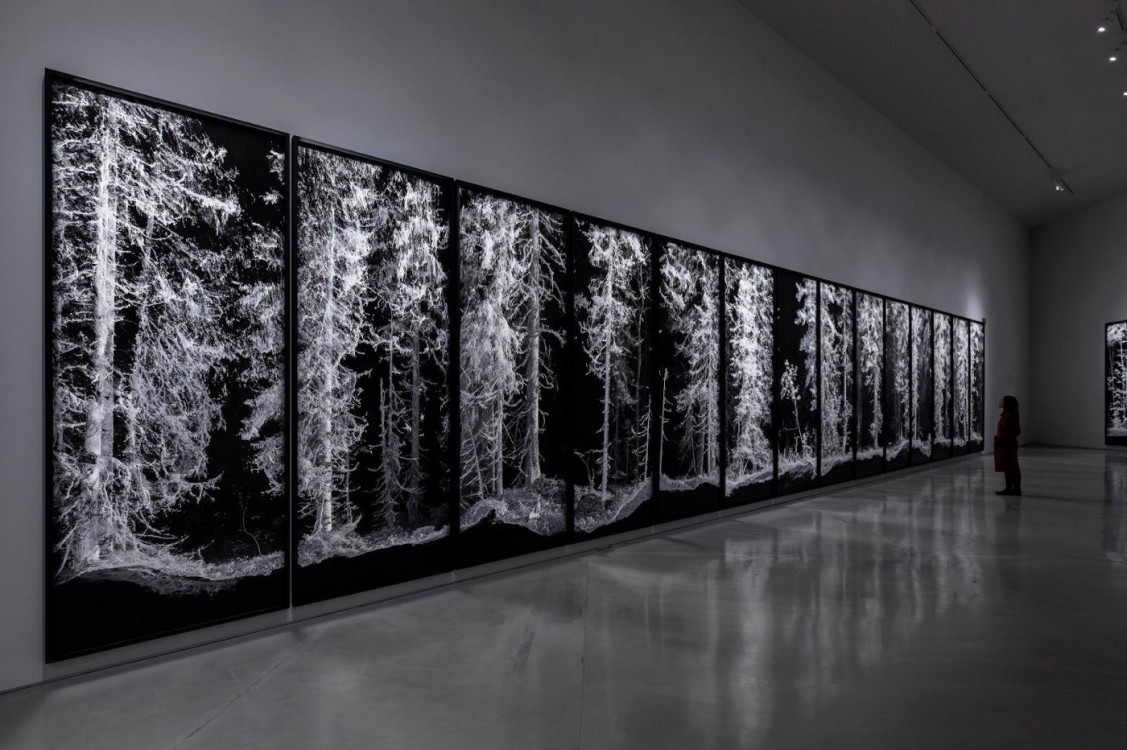
An ongoing project focusing on nature and the tradition of landscape painting, Remains deploys high-precision laser scanners used to capture natural landscapes, resulting in complex digital renderings printed on large-format archival paper. For this series, Quayola acts like a modern artist who physically immerses himself in nature and works en plein air. The forest is represented by data collected with a 3D scanner which works with a high-resolution laser system moving through the space. The data are then returned in the form of millions of white dots. If, on the one hand, the machine’s reading system of the forest is extremely accurate, on the other hand it also shows imperfections, therefore lowering the resolution. The combination of highly detailed geometric reconstructions and the imperfections of the 3D-scanning process create hybrid formations that lie somewhere in between the real and the artificial. The level of detail is very high, despite the fact that the image accuracy appears somehow reduced. Like in the impressionist technique, the reduction of visual information paradoxically discloses a greater expressive power.
Similarly, Promenade is a film that explores the logic and aesthetics of autonomous vehicles’ computer-vision systems. A drone flies through the secluded forests of Vallee de Joux (Switzerland), analysing the landscapes around it with meticulous precision. By contrast to the human experience of these surroundings, nature is observed and decoded with complete detachment. Contemplating natural environments through such technological apparatuses becomes an opportunity to devise new modes of visual synthesis and create new interpretations of the traditional “landscape”.
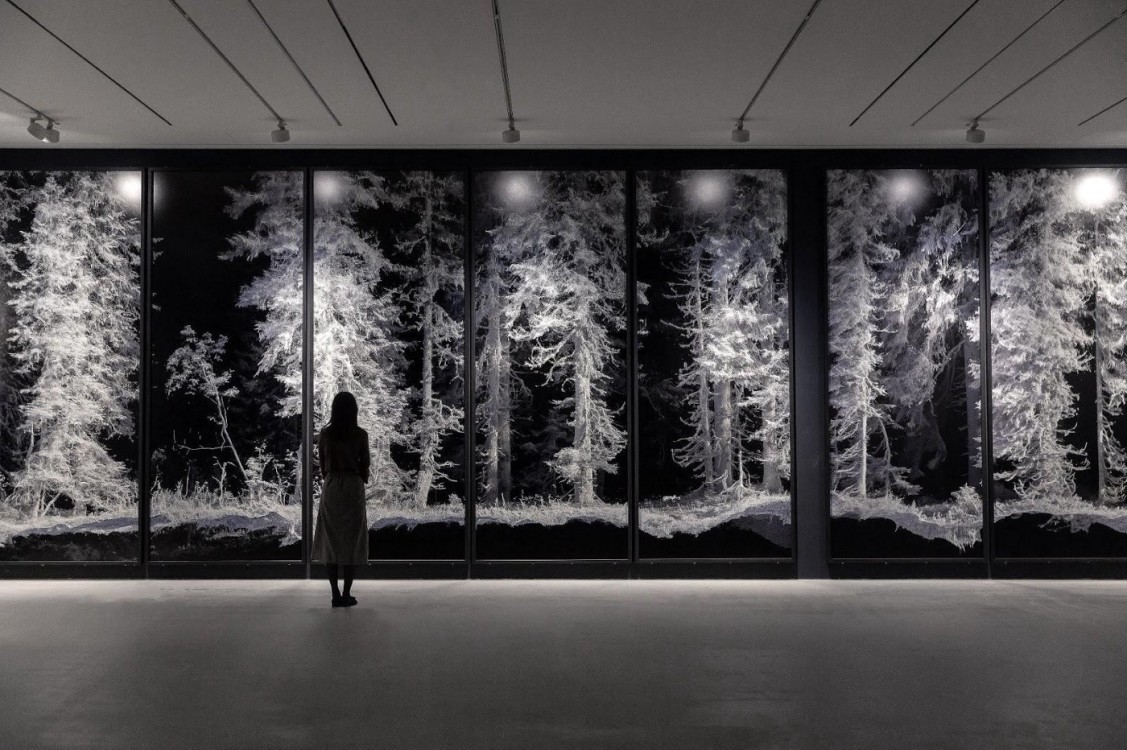
The endless matter: sculpting with robots
Sculpture Factory is an ongoing research on classical sculpting via robotic means. Inspired by Michelangelo’s technique of “non-finito” (the “unfinished”), the installation series explores the tensions between form and matter. Like in the pictorial works, the focus doesn’t lie on the subject, but rather on the process: Quayola studies and materializes the sculpting process around a figure and the infinite possibilities of how to reach it. A large industrial robot live-sculpts endless variations of classical and baroque masterpieces, such as Laocoön and his sons, Michelangelo’s Captives or Bernini’s Pluto and Proserpina. Such traditional, almost stereotypical sources maintain the same role they had for artists of the past: they do not represent the goal of the work but rather a recognizable place to explore a new style.
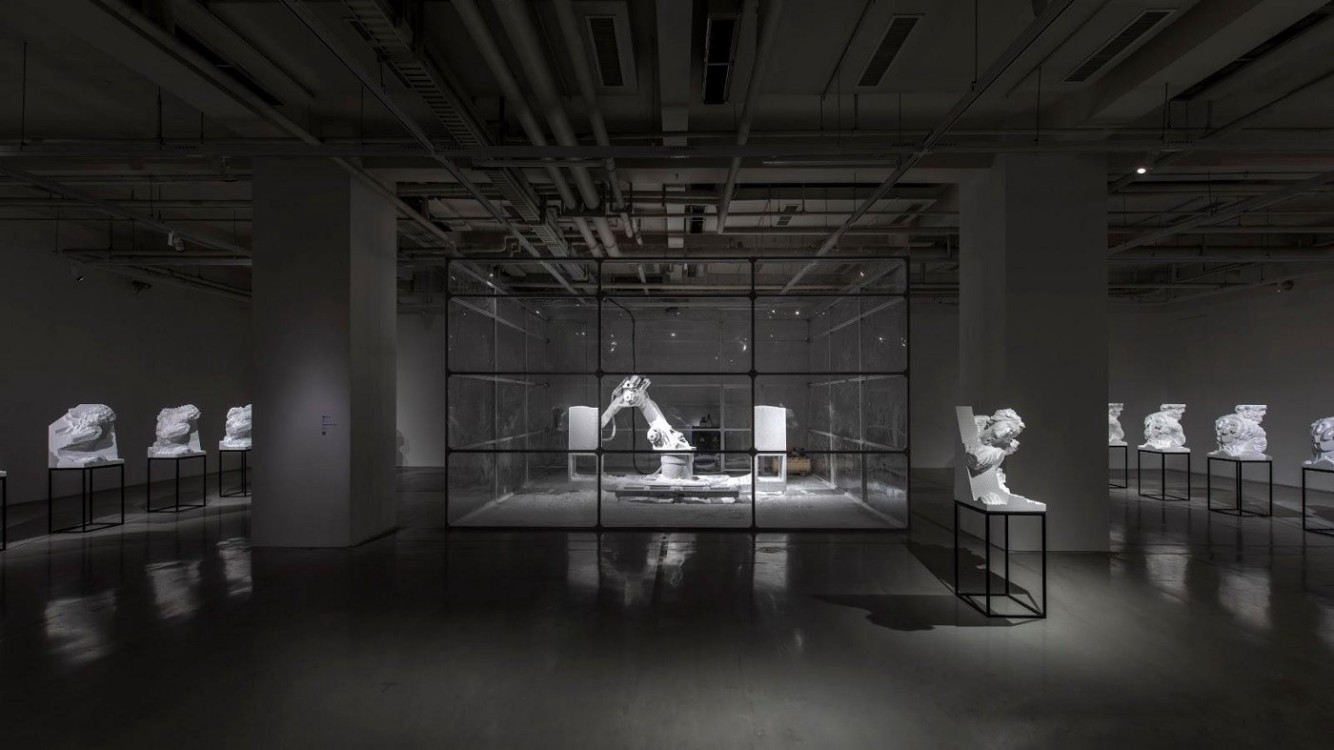
For Quayola, they represent a pretext to explore the evolutionary potential of matter. A basic model exists, but it is only handled as a target — which will never be reached. The robot is driven by software that, like a collaborator alongside the artist, proceeds by attempts. While never completing the full figure, each attempt discovers new articulations of matter. The stages are represented by each block, which not only conveys the process by which the figure emerges from the material, but also shows visible traces of the chipping. As a result, it exposes the aesthetics of the machine, as opposed to the human one. The work is the result of years of experimentation on sculpture with industrial robots and fully embodies Quayola’s process-based approach.
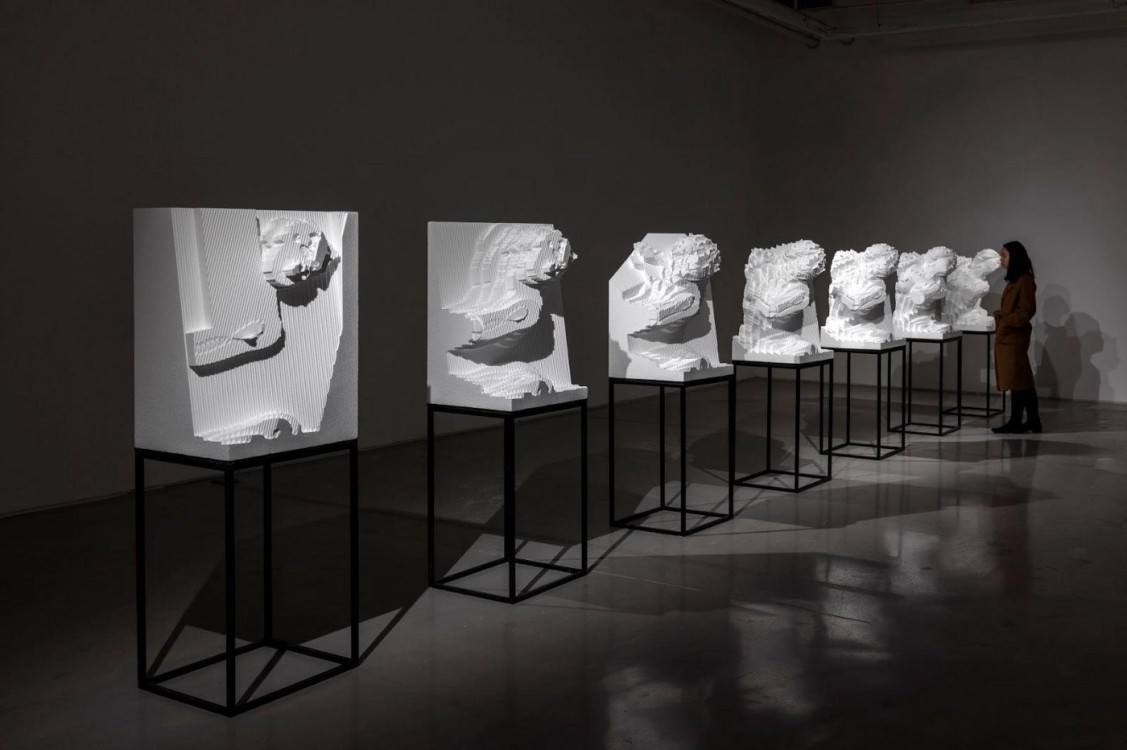
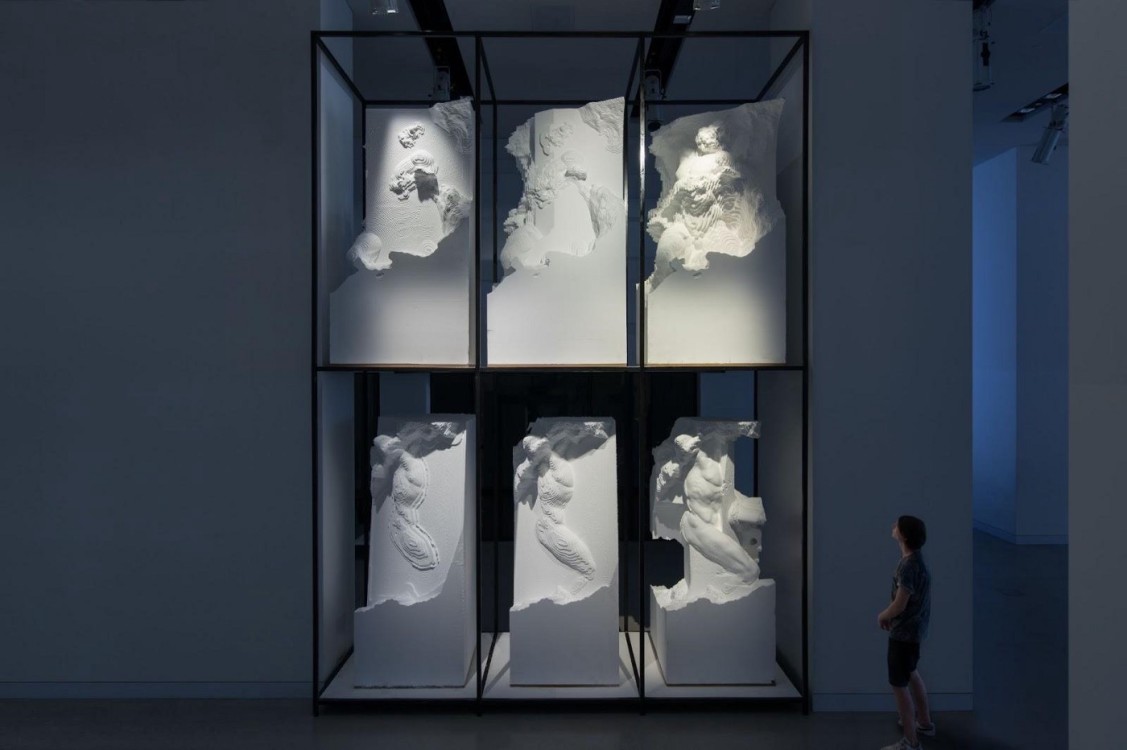
About the artist
Quayola employs technology as a lens to explore the tensions and equilibriums between seemingly opposing forces: the real and artificial, figurative and abstract, old and new. Constructing immersive installations, he engages with and re-imagines canonical imagery through contemporary technology. Landscape painting, classical sculpture and iconography are some of the historical aesthetics that serve as a point of departure for Quayola’s hybrid compositions. His varied practice, all deriving from custom computer software, also includes audiovisual performance, immersive video installations, sculpture, and works on paper.
His work has been performed and exhibited in many prestigious institutions worldwide including V&A Museum, London; Park Avenue Armory, New York; National Art Center, Tokyo; UCCA, Beijing; How Art Museum, Shanghai; SeMA, Seoul; Palais de Tokyo, Paris; Ars Electronica, Linz; Sonar Festival, Barcelona and Sundance Film Festival.
In 2013, Quayola was awarded the Golden Nica at Ars Electronica.
